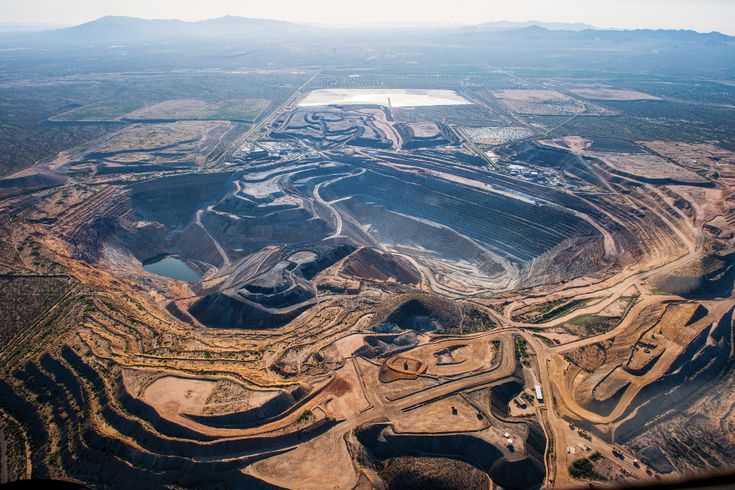
When people think of global innovation, they often picture artificial intelligence, renewable energy, or cutting-edge manufacturing. Yet behind all these modern marvels lies an ancient, indispensable industry: mining. From the smartphones in our pockets to the skyscrapers that shape our skylines, mining is the unseen engine powering nearly every sector of today’s economy.
Despite the rise of digital services and sustainability movements, mining remains one of the most vital industries in the world. In this post, we’ll explore why mining still powers the global economy, what role it plays across industries, and why its importance will only grow in the future.
⛏️ Mining: The Backbone of Civilization
Mining is the process of extracting valuable minerals, metals, and other geological materials from the Earth. These include:
- Metals like copper, aluminum, iron, gold, and silver
- Industrial minerals like limestone, phosphate, and gypsum
- Energy resources like coal and uranium
- Critical minerals such as lithium, cobalt, and rare earth elements
These materials are essential to nearly every product we use today. From roads and buildings to cars, electronics, and even agriculture, mining touches every corner of our lives.
How Mining Powers the Global Economy
1. It Supplies Raw Materials for Every Industry
Almost every sector depends on the products of mining:
- Construction: Uses limestone for cement, steel from iron ore, and gravel for roads.
- Manufacturing: Relies on metals like aluminum and copper to produce cars, appliances, and machinery.
- Technology: Phones, laptops, and renewable energy devices require rare earths, lithium, and cobalt.
- Healthcare: Uses mined materials in surgical instruments, dental devices, and medical imaging equipment.
- Agriculture: Depends on phosphate and potash, mined for fertilizer production.
Without mining, economic activity in almost every industry would come to a halt.
2. It Creates Millions of Jobs Worldwide
Mining directly employs over 30 million people globally and indirectly supports millions more through supply chains, transport, and equipment manufacturing. In developing countries especially, mining is often a major contributor to GDP and local employment.
In regions with limited economic diversity, mining offers critical infrastructure investment, community development, and job creation.
3. It Fuels National Economies
Countries with rich mineral resources often rely heavily on mining exports. For example:
- Australia: Mining contributes more than 10% of GDP.
- Chile: The world’s largest copper producer.
- South Africa: A leader in gold, platinum, and diamond exports.
- Indonesia: One of the world’s top nickel and coal producers.
Export revenues from mining help nations build roads, schools, hospitals, and diversify their economies.
4. It Supports the Green Energy Transition
Ironically, mining is key to building a greener future. Renewable energy technologies depend heavily on critical minerals:
- Solar panels use silver, tellurium, and silicon.
- Wind turbines require rare earth elements and aluminum.
- Electric vehicle (EV) batteries rely on lithium, cobalt, nickel, and graphite.
According to the International Energy Agency, achieving global climate goals will require a six-fold increase in mineral demand by 2040. That means more mining—not less—is needed to reach net-zero emissions.
5. It Drives Technological Advancements
Modern mining is not stuck in the past. It’s a hub of technological innovation:
- Automation: Drones, AI, and autonomous vehicles boost productivity and reduce human risk.
- IoT Sensors: Monitor equipment and environmental impact in real-time.
- Sustainable Practices: Recycled water systems, electric trucks, and renewable-powered operations are reducing mining’s carbon footprint.
Mining companies are also using big data and digital twins to optimize extraction, minimize waste, and improve safety.
The Balance Between Resource Extraction and Responsibility
While mining is essential, it also has environmental and social challenges. Land degradation, water pollution, deforestation, and displacement of communities are real concerns.
However, the industry is evolving:
- Environmental, Social, and Governance (ESG) frameworks are becoming standard.
- New technologies are making operations cleaner and more efficient.
- Community engagement and transparency are increasing.
- Circular economy models promote recycling and reduce demand for new extraction.
The path forward is not about abandoning mining—but about making it smarter, safer, and more sustainable.
The Future of Mining in the Global Economy
Mining’s future is shaped by three major forces:
- Growing demand for critical minerals due to electrification and digitalization
- Increasing scrutiny on environmental and social performance
- Technological innovation that enhances efficiency and sustainability
Emerging mining opportunities include:
- Deep-sea mining (with careful regulation)
- Urban mining (recovering metals from electronic waste)
- Asteroid mining (in long-term space exploration planning)
As long as civilization builds, powers, connects, and innovates, mining will remain a foundational force in the global economy.
Final Thoughts
Mining isn’t just about digging rocks out of the ground—it’s about fueling the world we live in. From smartphones to solar panels, skyscrapers to satellites, mining provides the raw ingredients that make modern life possible.
Yes, the industry must address its environmental and social impact. But as it does, it will become even more vital—not less. The green energy transition, digital innovation, and global infrastructure development all depend on a steady, sustainable supply of minerals.
In short, mining still powers the global economy—and will continue to do so for decades to come.
